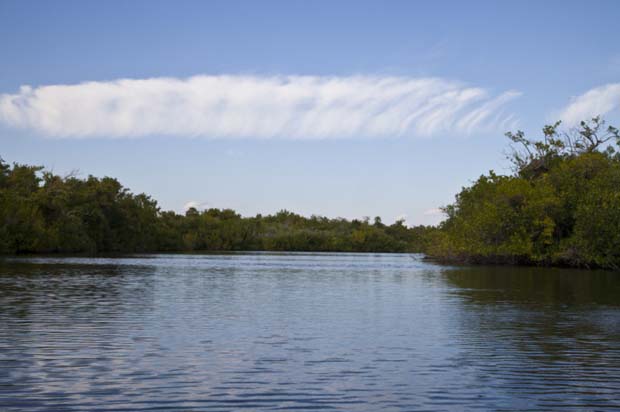By Jonathan Ullman, South Florida/Everglades Representative, Sierra Club
Staff comment: When the Tamiami Trail was built to connect Miami to the west coast of Florida in 1928, it essentially starved the pipe end on the Everglades, which would become Everglades National Park in 1947. Starving the Park of freshwater has drastically effected the fishery all the way into Florida Bay. Studies indicate that the new fresh water flow will reinvigorate the fishery and prove a life saver for one of the nations most endangered parks.
[dropcap]I[/dropcap]t was finally real. After two decades of advocacy by the Sierra Club and others, the ribbon was cut yesterday on a one-mile bridge over Tamiami Trail. Cars will be sailing over the bridge in about a month. The old road will be removed and parts of the River of Grass will flow free again for the first time in 85 years. This is just the beginning. The next 2.6 mile span, currently being designed by the National Park Service, will be part of 6.5 miles of total bridging, known as “The Evergades Skyway Bridge,” that will restore fresh water to Shark River Slough, the main-artery of Everglades National Park.
Secretary of the Interior Ken Salazar
Yesterday was a celebration of what is real; no longer confined to the pages of a glossy brochure, an on-line petition, or a plea to the President. For Skyway advocates, it’s been a long, hard road, but the long walk across the new bridge seemed to make time disappear.
But time is what is in short supply for the Everglades. The realities of human-induced climate change and sea level rise are finally beginning to set in. The timetables of bureaucracies must synchronize with the timetables of physics. The Skyway is our best weapon to stave off the effects of sea level rise. The road must be lifted quickly and sufficient clean water must pass underneath so fresh water can hydrate the aquifer and the soil. Otherwise, Everglades National Park will fall to the salt-water sea. These are not the words of doomsayers. These are the words of scientists. And not some distant future. Probably in your lifetime.
 Construction workers at the ceremony
Construction workers at the ceremony
While much attention was placed yesterday on the benefits to wildlife, as scores of wading birds flew overhead, the unspoken truth was the bridge is about so much more. It’s about the very survival of the Everglades.
We have one mile that is real, but so is climate change. Now it’s time to roll up our sleeves and finish the job before time is up.



